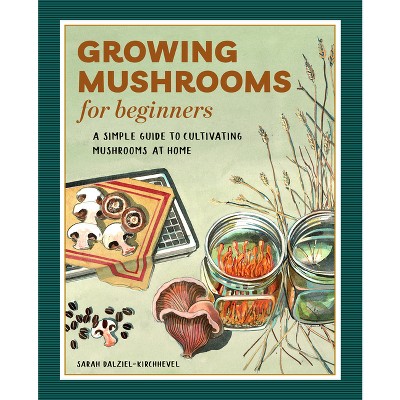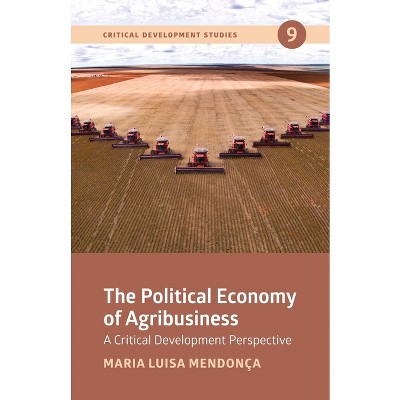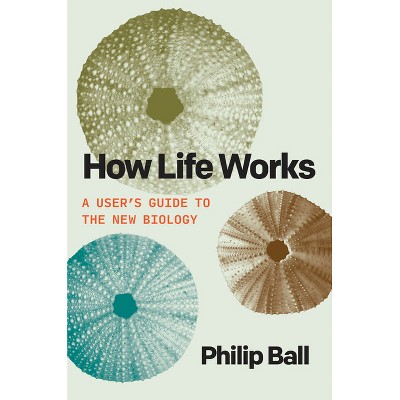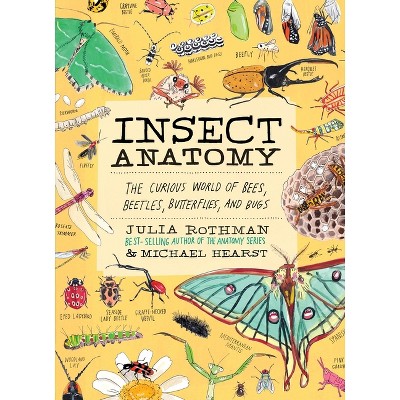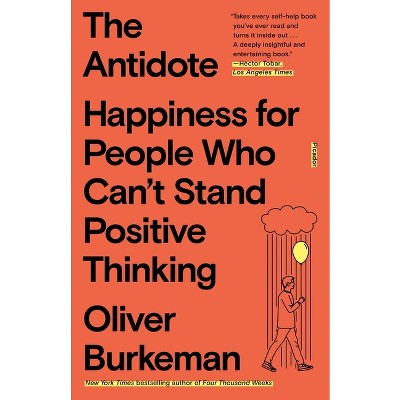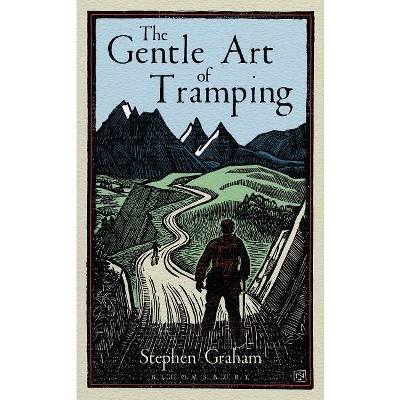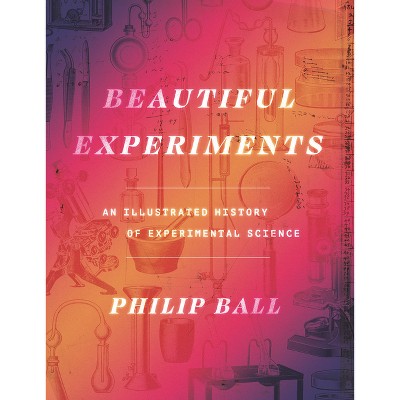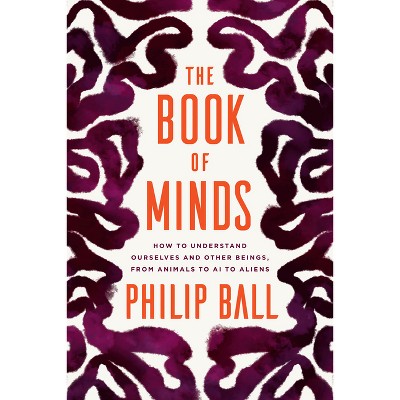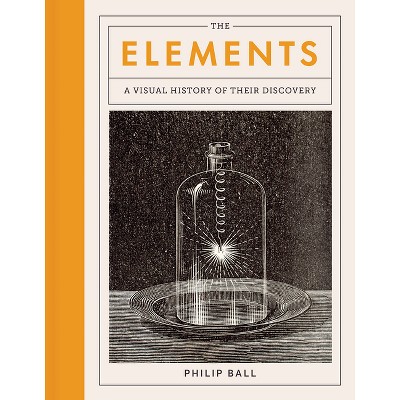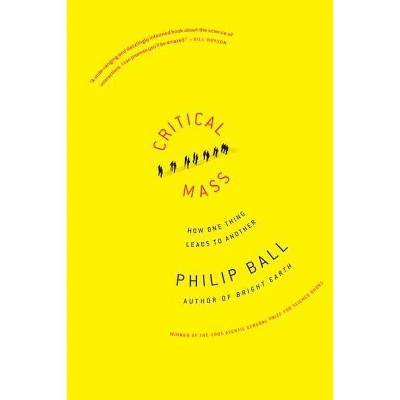Sponsored

How Life Works - by Philip Ball
$22.00
In Stock
Eligible for registries and wish lists
Sponsored
About this item
Highlights
- "Bold and intriguing.
- About the Author: Philip Ball is a freelance writer and broadcaster whose many books on the interactions of the sciences, the arts, and the wider culture include Bright Earth, Curiosity, Patterns in Nature, How to Grow a Human, The Modern Myths, The Elements, and, most recently, The Book of Minds, all also published by the University of Chicago Press.
- 552 Pages
- Science, History
Description
Book Synopsis
"Bold and intriguing."--Wall Street Journal - "Penetrating. . . . Provocative and profound."--Publishers Weekly (starred review) - "Offers plenty of food for thought."--Kirkus Reviews (starred review) "Ball's marvelous book is both wide-ranging and deep. . . . I could not put it down."--Siddhartha Mukherjee, author of The Song of the Cell and the Pulitzer Prize-winning The Emperor of All Maladies A new, cutting-edge vision of biology that revises our understanding of what life itself is, how to enhance it, and what possibilities it offers. Biology is undergoing a quiet but profound transformation. Several aspects of the standard picture of how life works--the idea of the genome as a blueprint, of genes as instructions for building an organism, of proteins as precisely tailored molecular machines, of cells as entities with fixed identities, and more--have been exposed as incomplete, misleading, or wrong. In How Life Works, Philip Ball explores the new biology, revealing life to be a far richer, more ingenious affair than we had guessed. Ball explains that there is no unique place to look for an answer to this question: life is a system of many levels--genes, proteins, cells, tissues, and body modules such as the immune system and the nervous system--each with its own rules and principles. How Life Works explains how these levels operate, interface, and work together (most of the time). With this knowledge come new possibilities. Today we can redesign and reconfigure living systems, tissues, and organisms. We can reprogram cells, for instance, to carry out new tasks and grow into structures not seen in the natural world. As we discover the conditions that dictate the forms into which cells organize themselves, our ability to guide and select the outcomes becomes ever more extraordinary. Some researchers believe that ultimately we will be able to regenerate limbs and organs, and perhaps even create new life forms that evolution has never imagined. Incorporating the latest research and insights, How Life Works is a sweeping journey into this new frontier of the life sciences, a realm that will reshape our understanding of life as we know it.Review Quotes
"And there's a beautiful book that came out, I think last year or end of 2023, How Life Works, by Philip Ball, and he basically brings us through a really good argument that life does not work by genetic determinism, which is how most people think and most biologists think that life works, and instead he kind of brings us towards a much more complete and integrative model of how life works."--Martin Picar "Scientific American podcast Science Quickly"
"And the overall winner is . . . How Life Works. This magisterial account of the workings of genes, cells and bodies is, first of all, an antidote to the gene-centric view of evolution, in which genes are 'libraries' or 'blueprints' or 'programs' for creating a body out of nothing, and all else is commentary. . . . How Life Works is a milestone in its field and should be required reading for anyone seeking to take an undergraduate degree in biology."--Henry Gee "The End Of The Pier Show, "My Top Reads Of 2024""
"Biological life like a democratic form of government is based on complexity, redundancy, modularity, robustness, resilience, communitarianism, and agency. Unlike authoritarian systems, our democracy is grounded in these natural principles, and again, it is always a work in progress. I highly recommend the recent book, How Life Works: A User's Guide to the New Biology by Ball. As I read it, I kept thinking about our political and social struggles for justice."--Gail Christopher "Salon"
"Well researched, interesting, and stimulating. Ball's very eloquent presentation . . . is a useful reminder to continue to interpret genetics and genomics with care."--Michael A. Goldman "Science"
"It is important to remember, as Philip Ball opined in his book How Life Works: A User's Guide to the New Biology, that the language of life is far more complex than we fathom. He states, 'Comparing life to a machine, a robot, a computer, sells it short.' Going further, he writes that 'life is a cascade of processes, each with a distinct integrity and autonomy, the logic of which has no parallel outside the living world.' Ball may well be right, but we're beginning to see the ability of AI to deconvolute some of the utter complexity of the language of life--and there's much more to come."--Eric Topol "Science"
"A robust and sustained takedown of the 'simplistic', 'distorted', 'barren' and 'intellectually thin' notion that biology is all about the gene. There is very much more to life than that, according to Ball. It might even have some meaning. . . . Ball is a ferociously gifted science writer. . . . There is so much [in How Life Works] that is amazing. . . . Urgent. . . . Astonishing."--James McConnachie "Sunday Times"
"Ball demotes the role of the double helix molecule, arguing that biology is far messier and marvellous than many scientists suspected. . . . Ambitious and eye-opening."--Debora Mackenzie "Financial Times"
"Ball has the rare ability to explain scientific concepts across very diverse disciplines. In his book How Life Works: A User's Guide to the New Biology he employs that understanding to introduce the reader to the profound changes taking place in the life sciences. As researchers understand in ever-greater detail how sensitive, sophisticated, and purposeful different living organisms can be, Ball explains the turn away from a purely mechanical view of life to one that embraces the inherently dynamic, complex, multilayered, interactive, and cognitive nature of the processes by which life sustains and regenerates itself."--James A. Shapiro, author of "Evolution: A View from the 21st Century. Fortified."
"Ball is a clarifier supreme. It is hard to imagine a more concise, coherent, if also challenging, single volume written on the discoveries made in the life sciences over the past seventy years. . . . How Life Works has a sense of up-to-the-minute authority. Yet Ball is also deeply alive to the human story within his project, leavening technical matters with wit and humour. He opens with a synoptic history of the way thinkers from Aristotle onwards have characterised life's operation. He digresses to incorporate many knotted cultural subplots which are embedded in the seemingly sterilised surfaces of the laboratory."--Mark Cocker "The Spectator"
"Ball is a terrific writer, pumping out books on incredibly diverse subjects at a rate that makes me feel jealous and inadequate. There's a wealth of well-researched information in here. . . . The book serves as an essential primer on our never-ending quest to understand life. Ultimately, 'what is life?' is a question without a useful answer. 'How does life work?' is the question that should drive the next wave of aspiring biologists from the cradle to the grave."--Adam Rutherford "Guardian (Book of the Day)"
"Ball's marvelous book is both wide-ranging and deep. It explores the fundamental mechanics of biology and leaves the reader full of awe and wonder. More than this, by reframing how we talk about the latest scientific discoveries, How Life Works has exciting implications for the future of the science of biology itself. I could not put it down."--Siddhartha Mukherjee, author of "The Song of the Cell" and the Pulitzer Prize-winning "The Emperor of All Maladies"
"Ball's new book offers a much-needed examination of exciting, cutting-edge findings in contemporary biology that is likely to dramatically transform our understanding of living systems--what they are (and, even more importantly, what they are not!), how they are organized at different levels, and the way they develop over time. It will be of interest not just to professional biologists and students of biology, but also to historians and philosophers of science, as well as to anyone curious to learn about the current state-of-play in twenty-first century life science."--Daniel J. Nicholson, coeditor of "Everything Flows: Towards a Processual Philosophy of Biology"
"For too long, scientists have been content in espousing the lazy metaphor of living systems operating simply like machines, says science writer Ball in How Life Works. Yet, it's important to be open about the complexity of biology--including what we don't know--because public understanding affects policy, health care and trust in science. . . . Ultimately, Ball concludes that 'we are at the beginning of a profound rethinking of how life works.' In my view, beginning is the key word here. Scientists must take care not to substitute an old set of dogmas with a new one. It's time to stop pretending that, give or take a few bits and pieces, we know how life works. Instead, we must let our ideas evolve as more discoveries are made in the coming decades. Sitting in uncertainty, while working to make those discoveries, will be biology's great task for the twenty-first century."--Denis Noble "Nature"
"I thought this book was wonderful, one of the best popular science books I've read in a long time. . . . It was a very good introduction to debunking Richard Dawkins-like 'primacy of the gene' stories, rather seeing genes as part of a broader, fairly flexible biological ecosystem. . . . Definitely recommended."--Tyler Cowen "Marginal Revolution"
"In his bold and intriguing How Life Works, the journalist and author Philip Ball tackles the thorny issue of causality in biological systems. While acknowledging formidable advances in our understanding, Ball argues that the structural triumphs of molecular biology and the pervasive language of genes have obscured life's true nature. . . . Life, he says, 'will not be found in the genome'; it 'does not resemble any instruction booklet ever made by humans.' Living things cannot be reduced to a parts list."--Adrian Woolfson "Wall Street Journal"
"In his 2023 book, How Life Works: A User's Guide to the New Biology, science writer Ball says genes are not the blueprint for life--that living systems are not operating simply like machines, and how genes operate depends on external factors such as diet and environment."-- "Austin Chronicle, "Mr. Smarty Pants Knows""
"In showing that complex life is more 'emergent' than 'programmed, ' Ball takes on many conventional notions about biology. 'We are at the beginning of a profound rethinking of how life works, ' he writes. Evolution has consistently invented new ways of creating living beings, and it will continue to do so. 'The challenge, ' writes the author, 'is to find a good way of talking about these vital stratagems, ' and his latest book offers plenty of food for thought for scientists in disciplines from medicine to engineering. A bold effort to create a new language that forces a 'rethinking' of 'thinking itself.'"-- "Kirkus Reviews (starred review)"
"Nearly all 'the neat stories that researchers routinely tell about how living cells work are incomplete, flawed, or just totally mistaken, ' according to this bold report. Science writer Ball explains how advances in biology have upended traditional understandings of how organisms develop and reproduce. The most revelatory material pushes back against the notion that DNA constitutes the 'blueprint' for life. . . . The author takes glee in tearing down scientific shibboleths . . . and his penetrating analysis underscores the stakes of outdated assumptions. . . . Provocative and profound, this has the power to change how readers understand life's most basic mechanisms."-- "Publishers Weekly (starred review)"
"Readers of this book will enjoy a veritable tour de force of first-class biological science writing and a truly wonderful introduction to much that is new in the understanding of how life works."-- "South African Journal of Science"
"The book really does deliver on its subtitle 'A user's guide to the new biology.' . . . You will be richly rewarded with a far more accurate picture of biology and medicine than so many books that came before."-- "Evolution 2.0"
"We are rewarded with some astonishing revelations. For example, it is possible to rearrange the face of a tadpole, so that the eyes are where the ears should be and the nose is where the mouth goes, but when that tadpole transforms into a frog, its face is as it should be, a beautiful frog you might want to kiss. This reconfiguration does not occur through genetics. . . . We are our genes is only partly true, and we don't yet have the complete picture. This book goes pretty deep into biology, but it provides an excellent overview of our current understanding of how life works."-- "Fireside Reading"
"Why did the genome fail to deliver? The answer is that life turned out to be more complicated than the sequencing pioneers imagined. A conceptual earthquake has radically shifted the gene paradigm underpinning biology since the early twentieth century. . . . Ball aims to address these shortcomings with a new vision of biology."--Johnjoe McFadden "Times Literary Supplement"
About the Author
Philip Ball is a freelance writer and broadcaster whose many books on the interactions of the sciences, the arts, and the wider culture include Bright Earth, Curiosity, Patterns in Nature, How to Grow a Human, The Modern Myths, The Elements, and, most recently, The Book of Minds, all also published by the University of Chicago Press. His book Critical Mass won the 2005 Aventis Prize for Science Books. Ball is also the 2022 recipient of the Royal Society's Wilkins-Bernal-Medawar Medal for contributions to the history, philosophy, or social roles of science. He trained as a chemist at the University of Oxford and as a physicist at the University of Bristol, and he was an editor at Nature for more than twenty years. He lives in London.Dimensions (Overall): 8.8 Inches (H) x 5.8 Inches (W) x 1.3 Inches (D)
Weight: 1.6 Pounds
Suggested Age: 22 Years and Up
Number of Pages: 552
Genre: Science
Sub-Genre: History
Publisher: University of Chicago Press
Format: Paperback
Author: Philip Ball
Language: English
Street Date: February 20, 2025
TCIN: 1006101790
UPC: 9780226840062
Item Number (DPCI): 247-50-2720
Origin: Made in the USA or Imported
If the item details aren’t accurate or complete, we want to know about it.
Shipping details
Estimated ship dimensions: 1.3 inches length x 5.8 inches width x 8.8 inches height
Estimated ship weight: 1.6 pounds
We regret that this item cannot be shipped to PO Boxes.
This item cannot be shipped to the following locations: American Samoa (see also separate entry under AS), Guam (see also separate entry under GU), Northern Mariana Islands, Puerto Rico (see also separate entry under PR), United States Minor Outlying Islands, Virgin Islands, U.S., APO/FPO
Return details
This item can be returned to any Target store or Target.com.
This item must be returned within 90 days of the date it was purchased in store, shipped, delivered by a Shipt shopper, or made ready for pickup.
See the return policy for complete information.
Guests also viewed
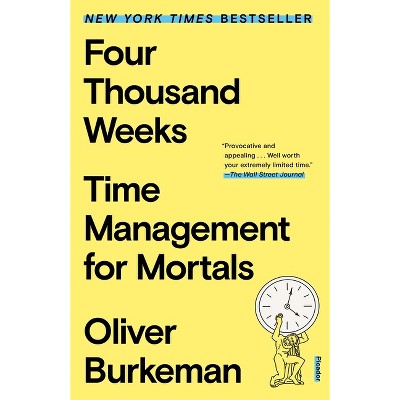
$10.01 - $15.49
MSRP $19.00 - $29.00 Lower price on select items
5 out of 5 stars with 3 ratings

$14.25 - $14.26
MSRP $19.00 - $27.00 Lower price on select items
5 out of 5 stars with 1 ratings




